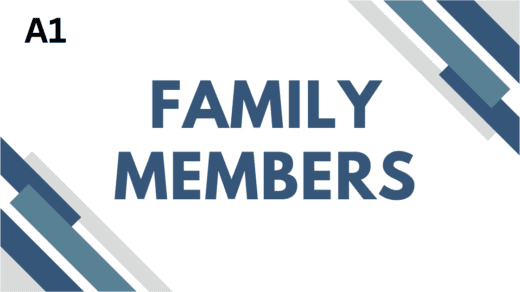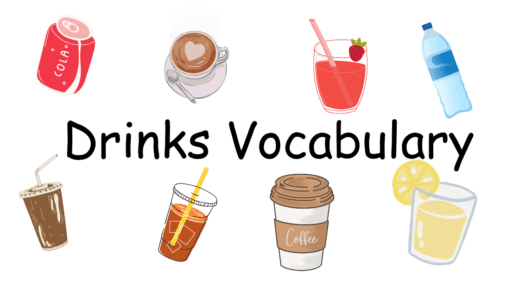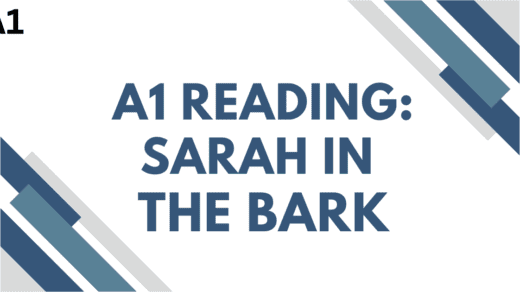This comprehensive English-speaking lesson expresses likes and dislikes. This lesson will cover a wide range of vocabulary, grammatical structures, and real-world examples to help you articulate your preferences with confidence.
The Importance of Expressing Preferences/ Likes and Dislikes
Being able to effectively communicate your likes and dislikes is a crucial skill in English, as it is in any language. It enables you to:
- Connect with others: Sharing your preferences can spark conversations, reveal common interests, and build relationships.
- Make informed choices: Whether you’re ordering food, choosing a movie, or planning a vacation, expressing your likes and dislikes helps you make decisions that align with your desires.
- Assert your needs: In professional and personal settings, clearly communicating your preferences ensures that your needs are met and that you’re comfortable with the choices being made.
- Show personality: Your likes and dislikes reveal your unique character and contribute to how others perceive you.
Basic (likes and dislikes)Vocabulary and Phrases
Let’s start with the foundational vocabulary and phrases for expressing likes and dislikes.
A. Expressing Likes:
- Like: This is the most basic and common verb.
- Example: “I like chocolate.” “She likes to read.” “They like playing basketball.”
- Love: This expresses a strong liking or affection.
- Example: “I love pizza.” “He loves spending time with his family.” “We love going to the beach.”
- Enjoy: This indicates pleasure or satisfaction derived from an activity or thing.
- Example: “I enjoy listening to music.” “She enjoys cooking.” “They enjoy traveling.”
- Be fond of: This expresses a gentle affection or liking.
- Example: “I’m fond of cats.” “He’s fond of old movies.” “They’re fond of walking in the park.”
- Be keen on: This indicates a strong interest or enthusiasm. (More common in British English)
- Example: “I’m keen on learning Spanish.” “She’s keen on photography.” “They’re keen on hiking.”
- Adore: This is a very strong expression of liking, almost bordering on love.
- Example: “I adore classical music.” “She adores her grandchildren.” “They adore spending time in nature.”
- Be a fan of: This indicates that you support or admire something or someone.
- Example: “I’m a fan of science fiction movies.” “She’s a fan of Taylor Swift.” “They’re fans of the local football team.”
- Appreciate: This expresses gratitude and recognition for something.
- Example: “I appreciate your help.” “She appreciates good art.” “They appreciate the beauty of nature.”
- Be into: This is a more informal way of saying you’re interested in something.
- Example: “I’m into rock climbing.” “She’s into fashion.” “They’re into video games.”
- Can’t get enough of: This means you really enjoy something and want more of it.
- Example: “I can’t get enough of this song.” “She can’t get enough of chocolate cake.” “They can’t get enough of traveling.”
B. Expressing Dislikes:
- Dislike: This is the basic opposite of “like.”
- Example: “I dislike waiting in line.” “She dislikes loud noises.” “They dislike rainy days.”
- Hate: This expresses a strong aversion or intense dislike.
- Example: “I hate spiders.” “He hates waking up early.” “We hate being late.”
- Can’t stand: This indicates a strong aversion or intolerance.
- Example: “I can’t stand the smell of smoke.” “She can’t stand rude people.” “They can’t stand listening to him complain.”
- Detest: This is a very strong expression of dislike, similar to “hate.”
- Example: “I detest dishonesty.” “He detests hypocrisy.” “They detest violence.”
- Loathe: Similar to “detest,” this expresses a deep-seated aversion.
- Example: “I loathe paperwork.” “She loathes arrogance.” “They loathe injustice.”
- Not a fan of: This is a polite way of saying you don’t like something.
- Example: “I’m not a fan of horror movies.” “She’s not a fan of spicy food.” “They’re not fans of reality TV.”
- Not into: This is an informal way of saying you’re not interested in something.
- Example: “I’m not into sports.” “She’s not into heavy metal music.” “They’re not into politics.”
- Be allergic to: This expresses a physical reaction, but can also be used metaphorically to express strong dislike.
- Example: “I’m allergic to shellfish.” (Literal) “I’m allergic to negativity.” (Metaphorical)
- Find something unpleasant/disgusting/annoying: This describes the feeling something evokes.
- Example: “I find cleaning unpleasant.” “She finds cockroaches disgusting.” “They find his behavior annoying.”
- Couldn’t care less: This expresses a complete lack of interest or concern.
- Example: “I couldn’t care less about the weather.” “She couldn’t care less about gossip.” “They couldn’t care less about the outcome of the game.”
Grammatical Structures
Now, let’s explore how to use these phrases in grammatically correct sentences.
A. Subject + Verb + Noun/Pronoun/Gerund:
This is the most common structure.
- Example:
- I like dogs. (Noun)
- She loves him. (Pronoun)
- They enjoy swimming. (Gerund – a verb acting as a noun)
- He hates being late. (Gerund phrase)
B. Subject + “Be” Verb + Adjective:
This structure uses adjectives to describe your feelings.
- Example:
- I am fond of old books.
- She is keen on learning new languages.
- They are interested in history.
- He is allergic to cats. (In this case, allergic functions as an adjective)
C. “It” + “Be” Verb + Adjective + “To” + Infinitive:
This structure is useful for expressing how you feel about doing something.
- Example:
- It is enjoyable to read a good book.
- It is boring to wait in line.
- It is exciting to travel to new places.
- It is difficult to learn a new language.
D. Using “What” Clauses:
This structure is used to express more complex preferences.
- Example:
- What I like most is the feeling of accomplishment after finishing a difficult task.
- What she enjoys is spending time with her family and friends.
- What they hate is being treated unfairly.
- What I can’t stand is people who are always late.
Adding Detail and Nuance
Beyond basic phrases, you can add detail and nuance to your expressions of likes and dislikes by:
A. Using Adverbs of Degree:
Adverbs of degree modify the intensity of your feelings.
- For Likes:
- Really: “I really like pizza.”
- Very much: “I enjoy playing the guitar very much.”
- Absolutely: “I absolutely love going to concerts.”
- Particularly: “I’m particularly fond of jazz music.”
- Incredibly: “I incredibly appreciate your help.”
- For Dislikes:
- Really: “I really dislike rude people.”
- Very much: “I hate traffic very much.”
- Absolutely: “I absolutely can’t stand the smell of cigarette smoke.”
- Particularly: “I’m particularly annoyed by people who talk loudly on their phones.”
- Intensely: “I intensely dislike people who spread rumors.”
B. Providing Reasons:
Explaining why you like or dislike something makes your preferences more meaningful and engaging. Use “because,” “since,” “as,” or “due to the fact that.”
- Example:
- “I love traveling because I enjoy experiencing different cultures.”
- “She dislikes crowded places because she feels claustrophobic.”
- “They enjoy hiking since it’s a great way to exercise and enjoy nature.”
- “I can’t stand reality TV due to the fact that it’s often staged and inauthentic.”
C. Using Qualifying Phrases:
Qualifying phrases soften or specify your preferences.
- Example:
- “I like coffee, but only in the morning.”
- “She enjoys reading, especially mystery novels.”
- “They dislike cold weather, unless it’s snowing and festive.”
- “I’m not a fan of horror movies, but I can appreciate a well-made thriller.”
- “I love ice cream, especially on a hot day.“
D. Using Contrasting Statements:
Contrasting statements highlight your preferences by comparing them to something else. Use “but,” “however,” “while,” or “whereas.”
- Example:
- “I like cats, but I love dogs.”
- “She enjoys cooking, however, she hates doing the dishes.”
- “They like watching movies at home, whereas I prefer going to the cinema.”
- “While I appreciate modern art, I prefer classical paintings.”
E. Using Idiomatic Expressions:
Idiomatic expressions add color and personality to your speech.
- Likes:
- “It’s right up my alley” (It’s something I’m very interested in.)
- Example: “That new photography exhibit is right up my alley.”
- “My cup of tea” (Something I enjoy or am good at.)
- Example: “Gardening isn’t really my cup of tea.”
- “It’s right up my alley” (It’s something I’m very interested in.)
- Dislikes:
- “A pain in the neck” (Something annoying or bothersome.)
- Example: “Dealing with customer complaints is a pain in the neck.”
- “Drive me up the wall” (Something that makes you very annoyed.)
- Example: “His constant humming drives me up the wall.”
- “A pain in the neck” (Something annoying or bothersome.)
Real-World likes and dislikes Examples and Practice
Let’s look at some scenarios and practice expressing likes and dislikes.
A. Ordering Food at a Restaurant:
- Waiter: “Are you ready to order?”
- You: “Yes, I am. I love pasta, so I think I’ll have the spaghetti carbonara. However, I’m not a fan of mushrooms, so could you please leave them out? I really appreciate that. Also, I absolutely can’t stand overly spicy food, so is it very spicy?”
- Waiter: “The carbonara isn’t spicy at all. And yes, we can leave out the mushrooms.”
B. Choosing a Movie with Friends:
- Friend 1: “What kind of movie should we watch?”
- You: “I’m keen on seeing a comedy. I really enjoy laughing and I can’t stand serious dramas. However, I’m not into romantic comedies. Action is also right up my alley! “
- Friend 2: “I like action movies.”
- Friend 3: “Okay, let’s see what action or comedy films are playing.”
C. Discussing Hobbies:
- Person A: “What do you do in your free time?”
- You: “I enjoy playing the guitar and writing songs. It’s very relaxing and creative. I’m also fond of reading, especially science fiction. What I dislike is watching TV; I find it rather boring. I couldn’t care less about reality TV.”
D. Giving Feedback on a Project:
- Colleague: “What do you think of my presentation?”
- You: “I appreciate the amount of research you put into it. The visuals were particularly effective. However, I dislike the font you used; I find it a little difficult to read. Overall, it’s good, but I think the conclusion could be stronger.”
Common Mistakes to Avoid
- Using “very” excessively: While “very” is useful, overuse can make your language sound repetitive. Try using more specific adverbs of degree.
- Being overly negative: While it’s important to express dislikes, try to balance them with positive statements. Focus on what you do like.
- Using overly formal language in informal settings: Adjust your vocabulary and grammar to the context.
- Misusing idioms: Ensure you understand the meaning and usage of idioms before using them.
- Forgetting to provide reasons: Explaining why you like or dislike something makes your preferences more meaningful.
Tips for practicing likes and dislikes:
- To practice expressing likes and dislikes in English, start by making a list of things you enjoy and things you don’t. Then, focus on using a variety of sentence structures.
- Firstly, master simple statements like “I like…” and “I dislike…” or “I enjoy…” and “I hate…”.
- Next, expand your vocabulary by learning synonyms for “like” such as “love,” “adore,” “am fond of,” and “am keen on,” and for “dislike” like “can’t stand,” “detest,” and “loathe.”
- Furthermore, practice using intensifiers to strengthen your feelings, for example, “I really love…” or “I absolutely hate…” .
- Additionally, work on explaining why you like or dislike something, using phrases like “because…” or “since…” For instance, “I like coffee because it gives me energy.”
- Moreover, learn to express preferences using comparative structures such as “I prefer X to Y” or “I’d rather X than Y.”
- Finally, improve your fluency by practicing speaking with a language partner, focusing on natural intonation and using transition words like “however,” “on the other hand,” or “whereas” to contrast your likes and dislikes and make your speech sound more natural.
Likes and Dislikes: Conclusion
In conclusion, likes and dislikes are an integral part of personal preferences that shape our identities and influence our choices in various aspects of life, from food and hobbies to relationships and entertainment. Understanding these preferences not only fosters self-awareness but also enhances our ability to connect with others by sharing common interests or respecting differences.




